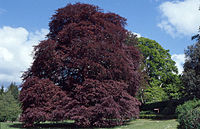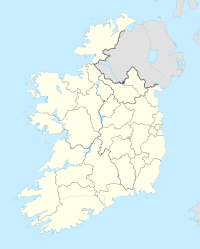Coole Park
| Coole Park | |
|---|---|

Autograph Tree in the Walled Garden
|
|
| Location of Coole Park in Ireland | |
| Type | National |
| Location | near Gort, County Galway |
| Coordinates | 53°05′47″N 8°50′06″W / 53.0965°N 8.835°WCoordinates: 53°05′47″N 8°50′06″W / 53.0965°N 8.835°W |
| Area | 1,000 acres (404.69 ha) |
| Created | late 18th century |
| Founder | Robert Gregory |
| Operated by | National Parks and Wildlife Service (Ireland) |
| Status | Open all year |
| Website | www |
Coole Park is a nature reserve of approximately 1,000 acres (4 km2) located a few miles west of Gort, County Galway, Ireland. It is operated by the Irish National Parks & Wildlife Service, part of the Department of Arts, Heritage and the Gaeltacht. The park is in a low–lying karstic limestone area characterised by seasonal lakes, known as turloughs, which are almost unique to Ireland. It has extensive woodlands. There are 6 kilometres of signposted nature trails plus a formal late 18th century walled garden.
The park was formerly the estate of the Gregory family. Coole House was built in the late 18th century for Robert Gregory. In 1880, Robert's great-grandson, William Henry Gregory married Isabella Augusta Persse, who became Lady Gregory. The walled garden contains an autograph tree, a copper beech that is engraved with initials of many of the leading figures of the Irish Literary Revival who were personal friends of Lady Gregory including William Butler Yeats, Edward Martyn, George Bernard Shaw, John Millington Synge and Seán O'Casey. The Yeats poem The Wild Swans at Coole was inspired by the beauty of the swans in the turlough at Coole Park. Yeats's home at Thoor Ballylee was just 3 miles away; he also wrote "Coole Park, 1929", a poem that describes the park as a symbol for the revival of Irish literature:
...
Wikipedia

